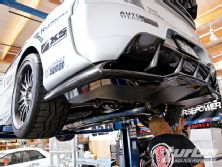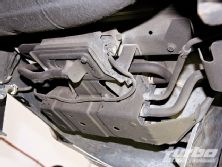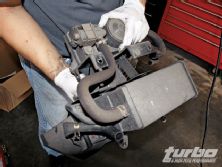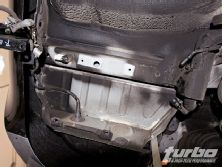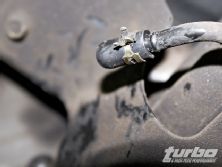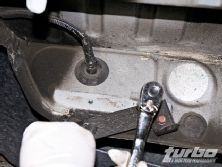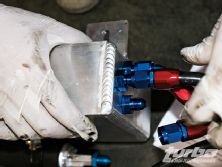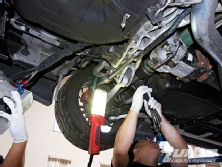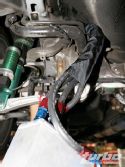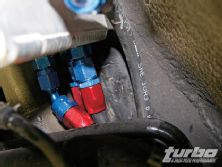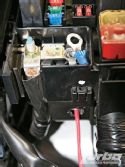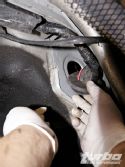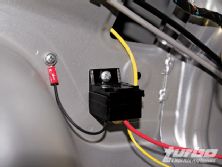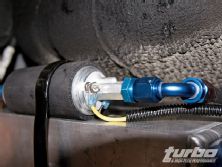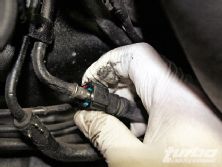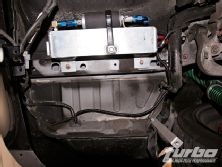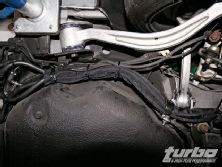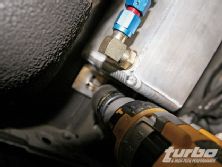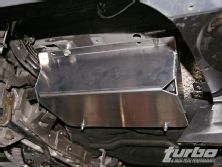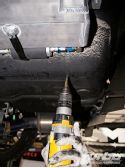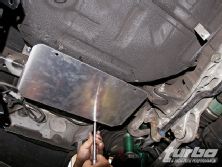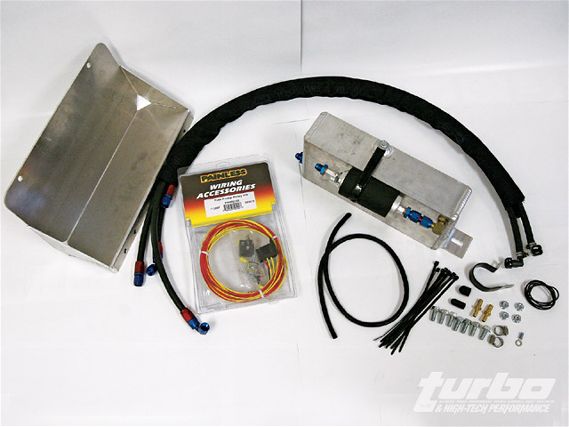 | Mitsubishi Evo AMS Fuel Surge Tank - Don't Starve Your Car To Death
| Mitsubishi Evo AMS Fuel Surge Tank - Don't Starve Your Car To Death
With all the performance advantages the Evo has to offer a motorsports enthusiast, it's easy to overlook some of the flaws inherited into the design of the vehicle. Take for example the Evo's factory fuel system, specifically the design of the fuel tank and pickup unit. Numerous road racers who own and have tracked their Evos have found a serious fuel starvation issue associated with the pump's pickup when taking hard turns or experiencing excessive g's, with less than an eighth of a tank of gas. This fuel starvation issue is not only catastrophic to your engine but also becomes deadly to a driver's wellbeing when a vehicle is coming out of Turn 8 at Big Willow in excess of 140 mph and suddenly the fuel cuts out, causing the engine to hiccup. That hesitation can cause the rear tires to slide out from under you as you lose control and barrel toward the retaining walls.
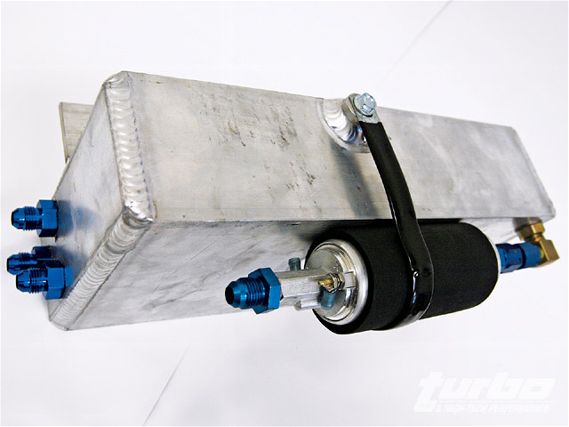 | The AMS surge tank was engineered to use an in-line Walbro 255lph pump, able to handle 600-plus wheel horsepower. The surge tank is upgradable in the near future with a dual pump option (1,000whp capable).
| The AMS surge tank was engineered to use an in-line Walbro 255lph pump, able to handle 600-plus wheel horsepower. The surge tank is upgradable in the near future with a dual pump option (1,000whp capable).
What can you do to prevent fuel starvation? The typical answer would be to fill up the car with a full tank of gas before hitting the track. That's a smart decision if you plan to enduro race or enter events like NASA's Honda Challenge, which require multiple laps around the track. But for many who plan to drag race or enter time trial events, like the Super Lap Battle, they will be handicapped by the decision of a full tank fill up. A general rule of thumb is that every gallon of gas is equivalent to 5.8-6.5 pounds (weight vary is dependant on temperature). Let's say you're at the track and we measured out the gasoline to be 6 pounds per gallon. If you filled your 14-gallon Evo IX tank to max capacity, the total weight would be 84 pounds. That's dead weight to consider in an event that doesn't require weight penalty or need to run more than three laps per session. So what's a simple yet effective solution for those weekend track warriors looking to enjoy a little quarter-mile run or apex carving session without running into dangerously lean conditions? It's simply called the AMS surge tank.
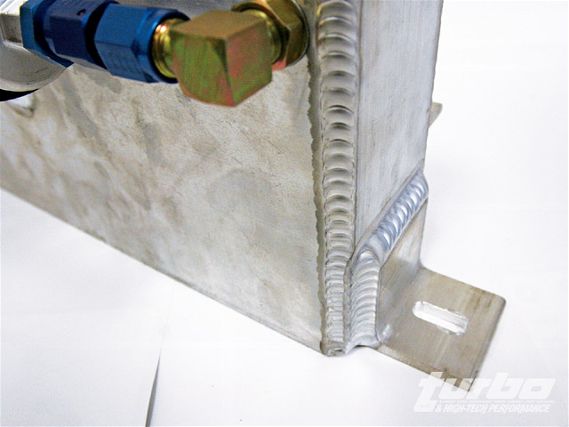 | Quality and craftsmanship is evident as AMS uses 1/4-inch thick 6061 T6 aluminum for the main unit and brackets.
| Quality and craftsmanship is evident as AMS uses 1/4-inch thick 6061 T6 aluminum for the main unit and brackets.
The theory behind the AMS surge tank is simple. Fuel is stored in an external unit while being placed between the factory in-tank pump and lines leading to the engine. Fed by a Walbro 255lph inline pump, the AMS unit prevents fuel starvation due to hard cornering, braking, and acceleration by storing additional fuel into the aluminum surge tank. Fed through an in-line pump, the surge tank supplies an ample amount of fuel into your engine, should the OEM tank ever experience a hiccup or starvation from its problematic design. The AMS fuel surge tank offers a little added insurance for the hardcore drag, road race, or autocross enthusiast who plans on racing their vehicle without the fear of damaging their engine.


